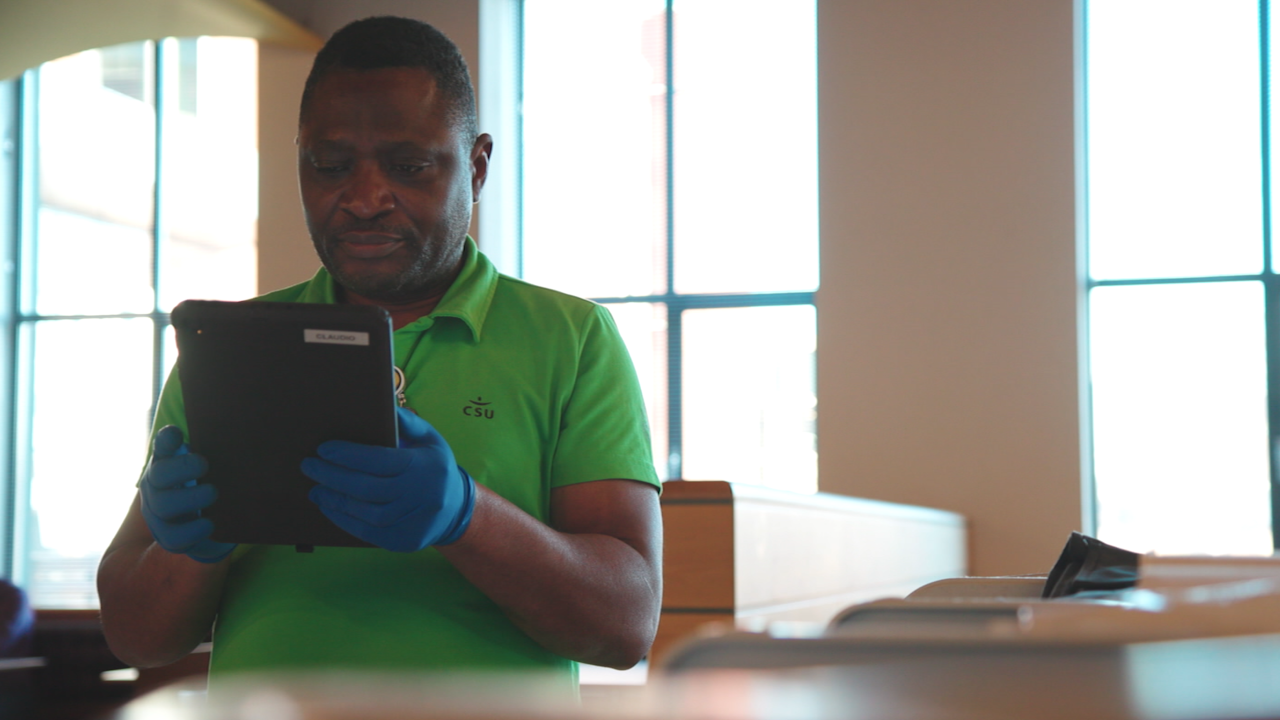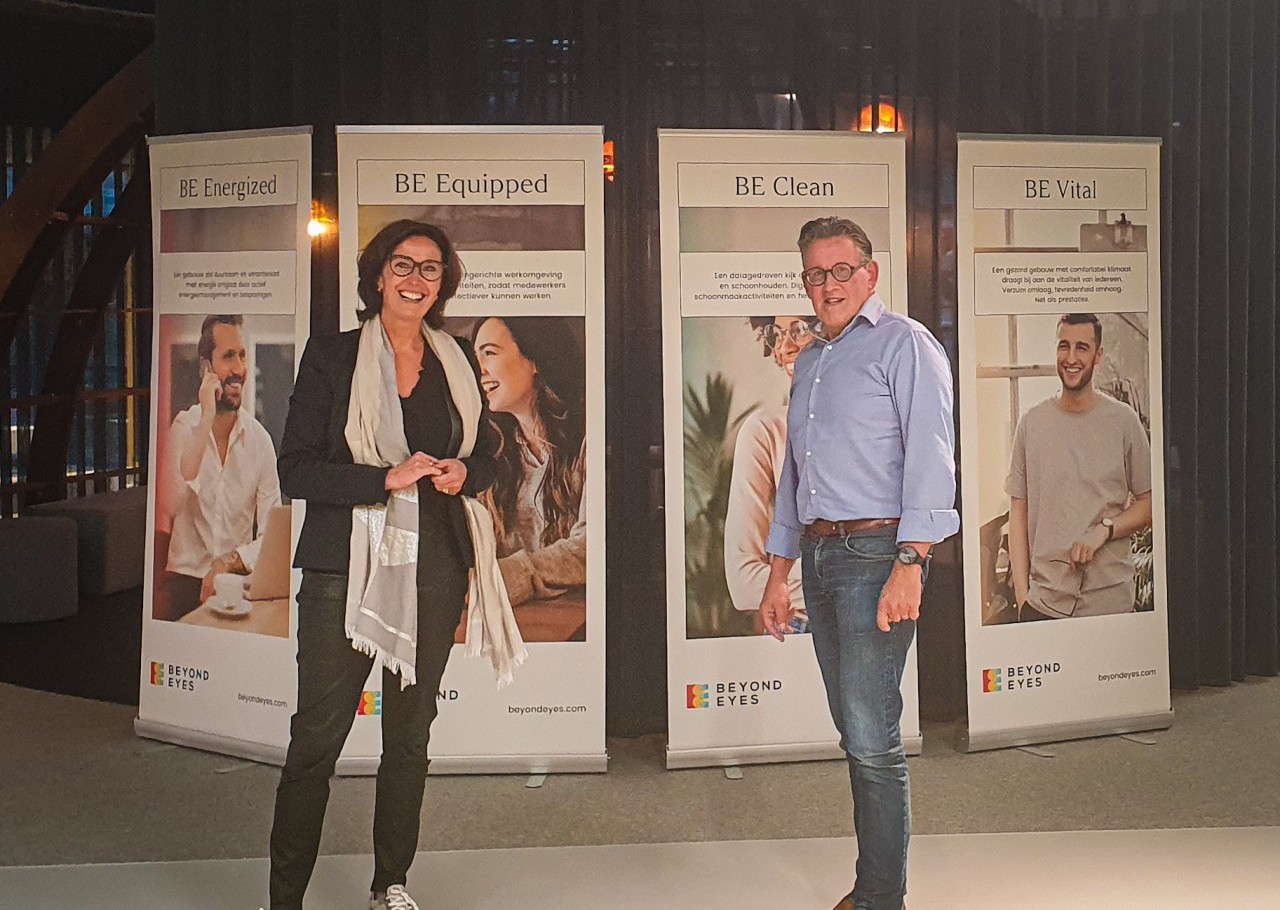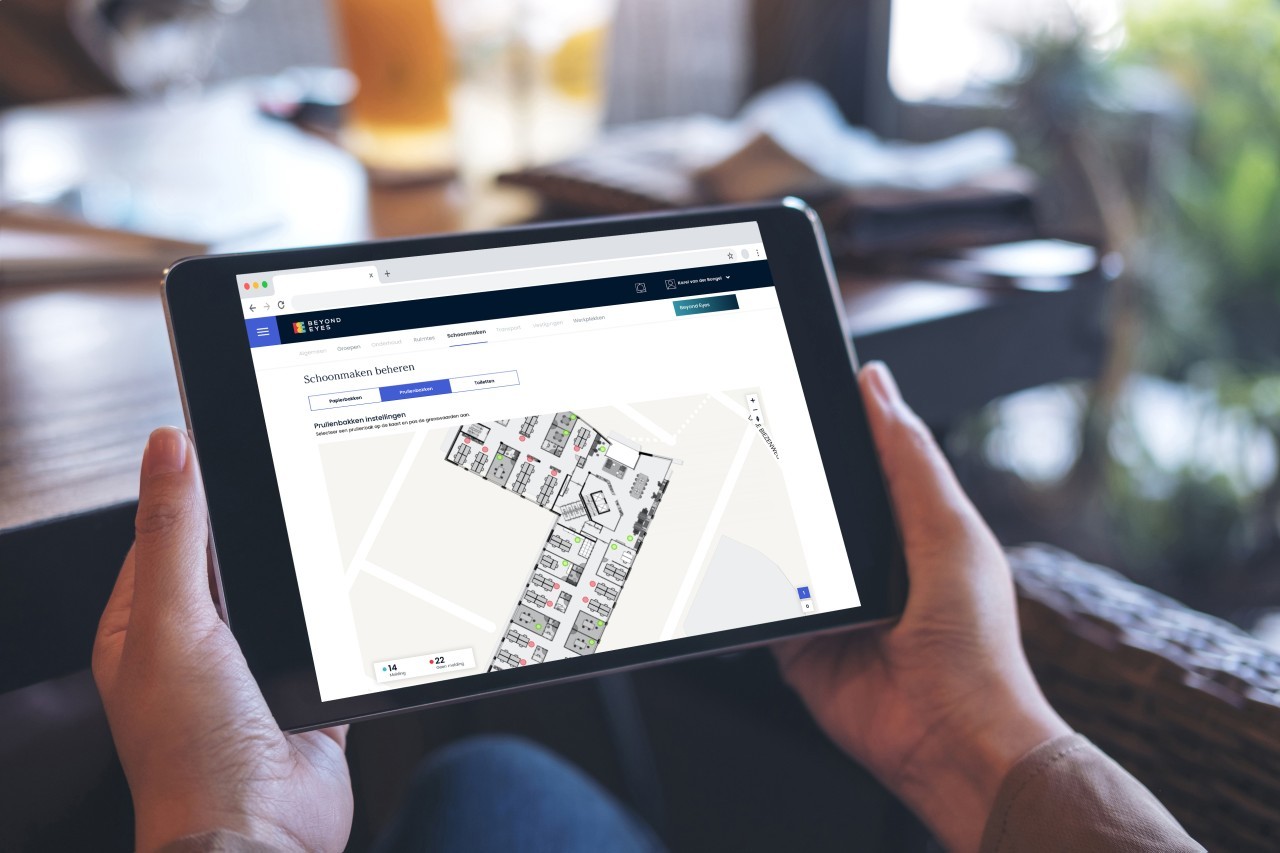
Cleaning and construction company. How did these two find each other? Ton Florn, director of business development at Heijmans, looks back. “I’ve always learned that good ideas begin with admiration. This also applies to Beyond Eyes, with our amazement at cleaning. Every day I would see the cleaner in our office walking into areas I knew she hadn’t been there since the day before. After a quick look in the trash, I came up with to the same conclusion and moved into the next room. And I guessed it: it was not used either. I didn’t see the logic in it and shared this misunderstanding with a friend.”
He was amazed that the vacuum cleaner was the last real innovation.
very crazy
This friend knew John van Hoof, CSU’s board chair, and wanted to introduce the two to each other. Floren: “I don’t understand cleaning at all, I told John while we were dating. He said that this way of working has grown this way historically. He was particularly surprised by the fact that the vacuum cleaner was actually the last real innovation in the cleaning industry. We’re done with this. Very crazy together.”
The starting point for investigating how to make this process smarter. This eventually led to the launch of BeSense (Beyond Eyes’ predecessor) in 2016. “We developed special sensors that record the number of movements in the room. This gave us insight into the use of the building and the cleaning can then be modified accordingly,” Florn says.
People should be central
“A very tech-driven idea,” Florian says. The sensor informs whether the room has been used or not and based on that, the cleaning employee knows if that room needs cleaning or not. But after a few years we realized we were wrong. Not technology, but people should be central. In other words: we wanted to think more from the user’s perspective. And in this case, the user is anyone who uses a building for business. It could be a cleaning employee, but also an office worker, facility manager, or property manager. Everyone in the building should be able to perform their job as optimally as possible.”
In the end, it’s all about working together, because no one can do anything alone.
Esmée Ficheroux, CSU Board Member, adds: “That first period of collaboration was pioneering and experimental. Fun time! But the reliance on the use of sensors got in the way. Then at some point you also have to dare say; This changes.”
cooperation series
Beyond Eyes grew out of that idea. In short, a set of services on a single digital platform that facilitates chain collaboration within a building. “In the end, it’s all about working together, because no one can do anything alone. No one can do anything alone. Fishrocks says.
“And you shouldn’t want to either. Traditionally, people contract with all kinds of different suppliers for all kinds of different services. All of these parties are working within the same building in their own silo and trying to improve their own island. That way, you’re never going to be optimal when you all consider The parties together, based on their own services, in what is best for the customer. Because all these parties offer their services to the same customer and therefore have the same goal: a satisfied user.”
All in one app
“Beyond Eyes is a smart digital platform on which you can build alliances within the client premises,” sums up Fichroux. So it is a way to connect the different services in the building.
Floren: “Users don’t want different apps for different services. They want one environment in which they can arrange everything. From booking workplace or parking to registering visitors and booking your lunch. Or passing spilled coffee, so that the cleaning staff gets an automatic notification and can clean it up right away.”
Why add something that already exists?
Pairing is the key
So communication is very important. “We can hook just about anything to the platform. Also sensors that are already in the building. Why add something that’s already there? Think smart towels or soap dispensers, which alert cleaning staff when they need to be refilled. Or sensors in a coffee machine or photocopier, so that They can be cleaned in a timely manner. Since cleaners are everywhere in the building, this way they can easily take everything in their path with them,” says Fisher.
“But we can also link the reservation system for a one-story garden to the platform, for example. So we know which homes to hand clean to guests at what time and we can also automatically check out when work is done.”

It’s time for other tasks
“At CSU, we believe it’s important to make the work of cleaning colleagues more enjoyable and lighter,” says Ficheroux. “By working smart, you will no longer have to check all the rooms and trash to decide whether or not you should clean that room. You are sent in real time by your tablet to where you want to go and you can then indicate with a smile whether it is The room is more or less dirty than expected.”
“This provides insights that can have predictive value,” she says. The smarter we work, the more time can be used for other tasks. For example in hospitality, such as welcoming visitors and directing them in the right direction, or watering plants. This makes the work more fun and diverse.”
ears and eyes
In addition, the platform and associated app are interactive. Let’s say a cleaning worker comes across a broken lamp or a loose door handle, they can easily take a picture of it that they can upload. This way it ends up automatically who can. Ficheroux: “In the past, the cleaning crew had no idea who to call such a report. So they didn’t do anything with it. Now the cleaning crew are ears and eyes to property, which changes their situation. After all, they are in fact jointly responsible for the environment the job “.
Connect and analyze data
In general, the cleaning company collects a lot of data on the premises. This can provide new and interesting insights. Fisherox: “It is useful to know yesterday’s occupancy rate, but what exactly does that mean? What does occupancy rate say about buying lunch or collecting waste on time? By connecting and analyzing different data, we can help customers with new insights and advise on that. I suppose it turns out That the sanitary room on the fourth floor is regularly dirty. How is that? Are these toilets used more than average? Why do we clean that space just like other toilet groups? Can we ensure a better distribution of visitors?”

Occupation control
Under the name BE Clean, cleaning is just one of Beyond Eyes’ pillars. Florence: “The key is really to have it set up. This is just about measuring and analyzing your building usage. How many visitors do you have and when? Are there certain trends to explore? What meeting rooms are most used and what type of workplaces are most popular? And of course also: How can you manage this in such a way that everyone always has the most suitable workplace for him or her?”
You can then associate more and more things with it. Such as cleaning, but also, for example, the liveliness of the building. Think temperature, noise level, particulate matter, and carbon dioxide content. “Here too, it’s not just about measuring those levels, but above all about interpreting them,” says Fleuren. “How can you arrange everything as optimally as possible, so that the climate is always pleasant? Even if suddenly there are more people in a certain room, for example. ”
“Why is every supplier reinventing the wheel on their own?”
Everything is connected
The last branch is BE Energized. This mainly concerns the energy consumption of the building. If there is no work then why is the lamp on? Why does the temperature rise? The following also applies here: by correlating information, on the one hand about occupancy and on the other, you can optimize and ultimately reduce costs. Reducing energy also means lowering costs and helping the climate.”
Fichroux concludes that “all the services in the building are interconnected.” “Why each supplier should reinvent the wheel on their own, if you can all work towards the same goal in a smart way: a healthy, safe and sustainable working or living environment for the customer.”
new relatives
The two say Beyond Eyes is looking for “new relatives,” as they call them. “My name and I actually are like the father and mother of this project,” Floren jokes. “We are steadfast in this family works from feeling that we really want to do it together and that we love each other, as a company and as individuals. We recorded our first collaboration on an A4 sheet. This has now been translated into a statement.”
Things like confidence, vulnerability, and daring to be honest when you don’t know something important.
Adds Ficheroux: “You often work with occasional partners, but you don’t really dive in. We’ve sought that intimacy and chosen to join forces based on communication. Things are like trust and vulnerability and daring to be honest when you don’t know something important here.”
Floren: “We are now working on expanding this family, in order to make the range of services more complete. Because being able to do well in the building, more is needed. Like catering well and healthy or managing waste, to give some examples.”
supportive technology
In closing, Florian says: “The difference is not in the technology. It’s about this collaboration and about making the process run as smoothly as possible for the customer. So that the customer can do their work without being inconvenienced, while we all do all those services in the background. What we still do a lot now is business. Accidents The coffee machine is out of order so we’ll do the maintenance There’s a spot notice we’ll clean the dispensers are empty so we’ll fill them We have to get rid of that And that’s possible too, because all that data lets us expect more and more Imagine if we could one day To say: “I am here to replace the lamp, because it will break in five minutes.” That way you are no longer a supplier, but a real partner who ensures that everything is working optimally. And I think the technology will come into play.

“Total coffee specialist. Hardcore reader. Incurable music scholar. Web guru. Freelance troublemaker. Problem solver. Travel trailblazer.”






More Stories
GALA lacks a chapter on e-health
Weird beer can taste really good.
Planets contain much more water than previously thought